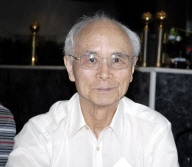Albert Einstein said ‘Galileo is the father of modern science,’ and I agree with him. Galileo introduced the method of modern science and used it to understand various natural phenomena. He planted seeds for analytical geometry, differential and integral calculus, Newton’s mechanics and Einstein’s theory of relativity, among others. He believed that nature is written in the language of mathematics.
The society where Galileo was growing up was very authoritarian, and Aristotle’s philosophy was absolute. No one dared question Aristotle’s theory. One day Galileo was looking at the falling hailstones and noticed all of them, large and small, seemed to fall at the same speed. This seemed to contradict Aristotle’s theory claiming that a heavier body falls faster than the lighter one if made of the same material. The next day he brought this question to the attention of his science professor; the professor said ‘Since Aristotle could not be wrong, smaller stones must be falling from lower places.’ He was very disappointed with the classes of Pisa University where he was a medical student, so he started skipping them. Outside the university he studied Euclid’s mathematics and Archimedes’ works; he was impressed by them, especially by Archimedes’ mathematics and science. His belief that Nature is written in the language of mathematics perhaps began forming at this time.
His study of a falling body shows his ingenuity in developing experimental methods and interpretation of the results. When a ball was dropped it moved down too fast, so he decided to slow down the movement. A bronze sphere was chosen to roll down an inclined plane. He recorded the position as a function of time at various inclinations of the plane. He found that the ball’s speed increased at a constant rate. In his graphic method of calculating the distance traveled, he introduced the concepts of infinitesimal and integration. He found the ball speed increased as the incline became steeper and it decreased as the plane became closer to the horizontal. He rolled the ball on a horizontal plane and found the speed of the ball remained constant. He decided the motion of a thrown ball is the addition of a uniform horizontal motion and vertical accelerated motion. To show this motion he introduced a coordinate system and showed the trajectory was a parabola; later this was generalized by Rene Descartes to the Cartesian coordinate system and analytical geometry.
After determining the acceleration of a ball rolling on inclined planes with different inclinations, he wanted to know how the force along the inclined plane changed with the inclination. He connected a brass ball to a weight dish by a string and had the string go over the pulley while the dish was hanging vertically from the pulley. The ball was placed on an inclined plane so that the string and the plane were parallel. Weight on the dish was increased until the ball stopped moving. He found that the balancing weight on the dish changed proportionately to the acceleration change.
The fact that the motion of a thrown body is a sum of the vertical motion and horizontal motion convinced Galileo that motions of various objects on a ship moving at a constant velocity and a ship anchored would be exactly identical when viewed in each ship. We name this Galileo’s theory of relativity. In physics language, ‘Each law of motion is identical in two reference frames moving at a constant relative velocity.’
Galileo’s work on a falling body provided seeds and sprouts for Isaac Newton’s mechanics as well as mathematics. Galileo’s belief that nature is written in the language of mathematics has had a strong influence on many physicists including Descartes and Newton since Galileo’s days.
James Clerk Maxwell derived his four equations summarizing the existing laws in electricity and magnetism. From these equations he derived a differential equation for electromagnetic waves, which showed that the speed of electromagnetic wave is a constant equal in all inertial frames. Many people did not believe this. But Albert Einstein believed it and combined it with Galileo’s theory of relativity.
Since Galileo’s relativity applied to laws of mechanics only, it was natural for Einstein to incorporate the laws of electricity and magnetism to form a new theory of relativity. He proposed two postulates of relativity for his special theory of relativity: (1) Each law of physics has the same form in all inertial reference frames (2) Speed of light in vacuum is a constant c in all inertial reference frames. He later developed the general theory of relativity which applies to accelerating reference frames.
We must carefully study other people’s work and obtain a chance for great creations, as these great scientists did.

Sang-il Choi
Professor Emerious of Physics


